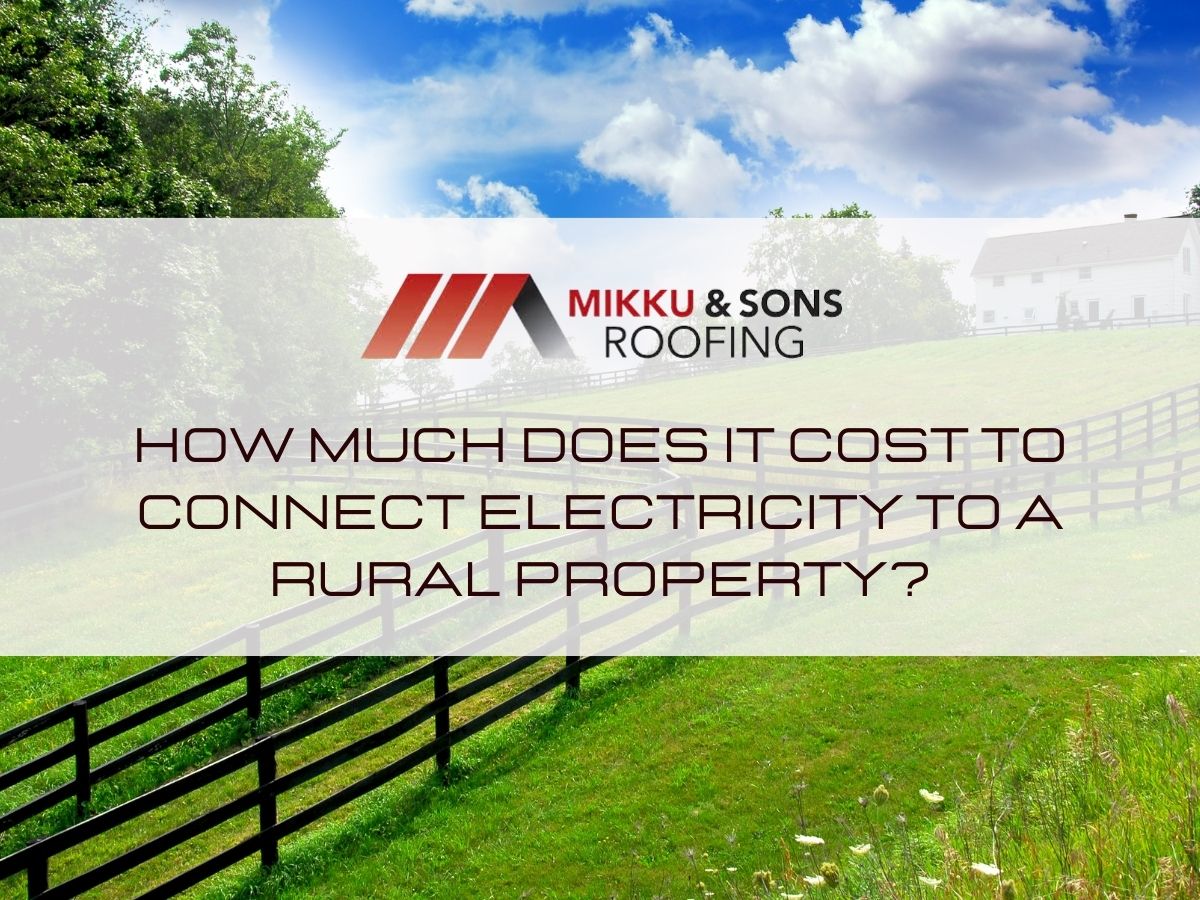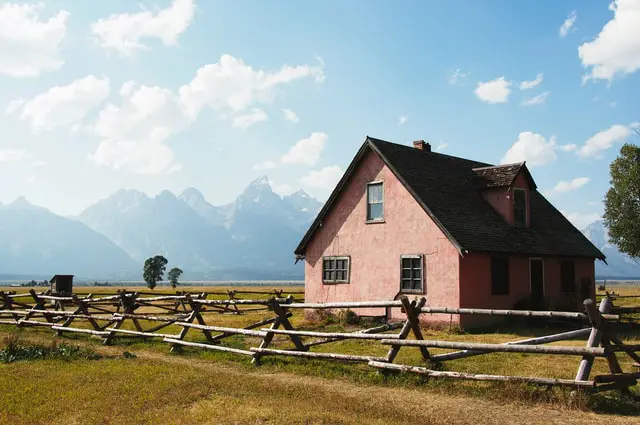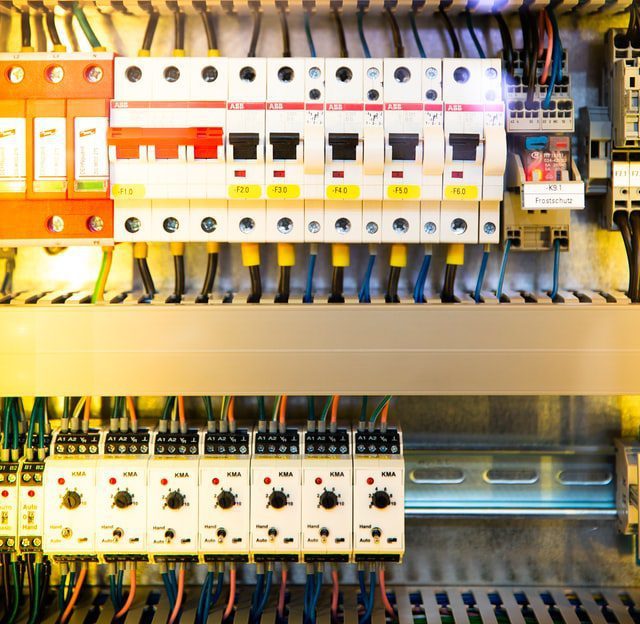

When considering investing in vacant land or acres, one potential pricing factor that should not be overlooked is: How Much Does It Cost To Connect Electricity To A Rural Property?
It can be expensive or relatively inexpensive, depending on several factors. When examining a particular property, be sure to investigate how far the nearest power lines are from the property.
Generally speaking, electricity in rural areas is easily accessible. Power lines run countless county roads that cross our great state. However, just because there is a transmission line at the door does not mean it is ready.
What if you want to build a house behind the house?
Depending on the size of the property, it can amount to up to tens of thousands of dollars. Also, depending on the region and the service provider, the price per pole and per meter can vary greatly.
On a property in Texas, it cost $12,000 to run a half-mile railroad inside the estate, which included six stops, for the total cost. Approximately $ 2,000 per position.
In central Texas, costs range between $ 3,500 and $ 5,000 per shift. In addition, most suppliers will not give you an estimate without an engineer to inspect the site, which can be done during the in-depth analysis period.
When introducing customers who buy, one of the first things I do when reviewing potential ads is to look at a map and see if there is electricity at the site or where the pole is closest to the electrical voltage.
This article will expound on how much it costs to connect electricity to a rural property.
The cost of electrical installation depends on the process and location, but you should expect to spend approximately $10,000 or more in most cases. The local power company should tell you where the power lines are closest to the property you are considering.
Do not rely on the seller or their agent for a final answer, although they may if indeed electricity is already available on the property or on the existing driveway where it is located or maybe.
Be Mindful: Beware of the ambiguous "close" answer. Close is indefinite. That could mean right next to the road or quite far from it.
Most utility companies will charge you for each leg required to extend the line to and from your property.
You will need to determine if the lines are available from public property, such as a highway, or from a neighboring private property, in which case you will need the owner's permission to do so. Often this is not a problem, but it can be a red flag for neighbors.
Like many today, you might be interested in investing in solar energy. That's a good idea, but you'll still need access to your local power grid.
Key Point: For some neighbors, it's a red flag when you request to use their line, so make sure you seek the owner's permission and don't make any irrational decisions.
Determining the price of the essential services you need on your property is easy but essential.
First of all, you need to know the address of your property. If your shipment does not have an address, you can use the county Geographic Information System or GIS map to determine the roads and addresses closest to your property.
You'll most likely find nearby utilities on the various properties listed, but remember that "nearby" is a loose term. Buying land with utilities a few feet from the property will be cheaper than one with services three miles away.
Although a real estate agent with a valid license may know these things, it is advisable not to depend on this information. Check in detail to find out how far you are from the required content.
You will need to contact your local authorities to find out the price. Google Maps can be your friend in this situation. For example, you can look for an energy company that serves the land area.
Call the utility to figure out how much they charge for line extensions. Then calculate the distance from your property to the nearest transmission line to find out how much you will spend on getting electricity.
If utilities seem expensive or not available, another option is to call local contractors to quote the prices of services needed.

Whether you put together a camp in a rural area or start a house in a blank game, you will need a little power to make it peruse.
For starters, you have two options:
In most cases, the goal will be to have a permanent power stable from the company's public service after completing the project.
Assuming that this is true, it is logical to understand from the beginning; you will only need to succeed in configuration once.
But they live outside the scope of usefulness, especially in exceptionally rural areas where people want holiday homes or hunting camps are common.
Here we will cover two approaches to solving two methods of energy installation: using a portable generator or connect the utility.
Before buying a property, before deciding the type of energy you want, you need to check how users will be charged to download the service on your site.
If the electrical lines lead along the road in front of the object, then putting in a column or two is something they do every day. But if the construction site is long along the road, perhaps miles in the woods, for example, the price of obtaining the power supply in place will be very different.
The electrical company will give you free lines of service delivery, for example from the road to the place to 100 meters. But when you move further out with more poles, then more cable is needed. The cost can be $25 to $50 per foot.
Therefore, if you are a one-mile way from the road, this means you could be paying somewhere in the region of $125,000 and $250,000. Some public services websites even offer you to finance part of that cost up to APR from about 10%.
Key Insight: Make sure you have planned and understand potential costs. It is necessary for the success of your project.
Everyone will need energy if they decide to build a house or contract subcontractors to do the job.
Most entrepreneurs will bring their generators instead of relying on you to give them.
At some point, the house will need an electric service before someone receives a Certificate of Occupancy.
In general, they will have to put in a new post, and a transformer regardless of the service is temporary or permanent. The temporary service will come from several receptacles connected to a pole, a few feet above ground level. They are served with a cable that falls down the column, through one meter, and in climatic protected circuits.
It will be a pair of duplex tanks of 120 volts. If you want more, you will need to negotiate the installation with a public company. The power of construction tools is assumed in place of expansion.
There are several benefits to establishing temporary utility power. With this type of power, you don't have to stress about an extremely loud generator or one that doesn't work. And don't forget you constantly need to top it up with gas.
Whether you want a temporary camp generator or to install energy in a new home, completing thorough research in advance will make installing power on a vacant property an easier process.
Take Note: You will need to equip your house with the proper outlets and circuit breakers to ensure the power can reach every room. Work with your selected teams to make sure you choose the correct models and place.

One thing is for sure: there is no set amount to cover the cost of the various utilities you will need on your property.
Depending on the wide range of problems you may encounter with your property, you can spend less than $4,000 or more than $40,000 on one utility. Here is one major factor that will affect the cost of getting utilities on your land:
How much does it cost to connect electricity to a rural property depends heavily on location. In most cases, if your property is close to utilities, the amount of money you will spend will be less than if you are away from these sources.
For example, you will have to pay more for each meter of line extension from the utility to your property. In some cases, cables may need to be routed underground, which is even more expensive than laying overhead cables.
Some companies are negotiating $40,000 per mile of power line extension. There are other sources of electricity if the connection to the transmission line is too expensive due to its location.
This is a question that you assume everyone will know the answer to, but not everyone can answer. Generally, this is because in some areas across the States. You don't always get to choose your supplier.
To find out who your electricity company will be, start by asking landowners in the area to whom they are sending your check. If that fails, look at the utility poles closest to your property, usually those at highway intersections, and make sure there is a small sign that says the utility company.
Or you can search your state's websites. Some may have an energy-specific section on their website that provides you with more information about electric utilities and suppliers by address.
You could potentially get an answer by reaching out to your local utility or state regulatory commission.
The key is to start by calling the one you think is the most likely candidate. Call and ask questions about your area, and they will be able to tell you if they serve you or refer you to another company.

Request a quote for a new connection from the distribution system operator in charge of electricity in your geographical area when you have plans for your proposals, including layout and location plans. The application process usually involves filling out an online form.
The connection is not cheap, and it is better to calculate the costs as soon as possible. The offer will also have a time limit, so keep in mind the required delivery time.
Nothing will happen until you pay the entire stock. Once you do that, ensure you stick to the schedule.
Once you receive the offer, you will receive the person's name in charge of your project. They may facilitate contract approval and assist in transitioning from distribution to supply business when a merger is required.
Keep in Mind: Building a professional relationship with the person in charge of your project is necessary.
Installing a new electrical service involves more than writing a check.
Further logistical issues are becoming more complex as far away from the country as possible.
1. An engineer will be sent to inspect the property and determine how to manage the new transmission lines. The engineer will determine the route taken by the new lines, as well as the requirements of the utility company for cleaning between the trees, etc.
2. The engineer will tell you which trees should be removed and other objects from the path.
3. You will establish a service contract essentially detailing your promise to purchase electricity.
4. Generally, the power company will ask you to lay the foundations and slab before any work is done to bring electricity to the construction site.
Insight: It might sound unreasonable to ask for foundations to be dug and slabbed. Still, many electricity companies have been let down by owners who state they will build and purchase electricity monthly, but this falls through.
When you meet an engineer representing an energy company, be sure to find out their name and phone number.
On occasions, customers have done everything an engineer or an electrical company has requested, only to be told later that something different is needed, which takes up a lot of time and effort on the customer.
Sometimes the power company will hire external contractors to clean the new lines.
You can help ensure communication is completely clear by regularly contacting the electricity company and the contractor to guarantee the job is done correctly in the first instance.
Before the utility can install the actual electricity meter, the city or county may need to inspect the wiring installation and the temporary pole. The city/county should send an approved inspection report to the power company to install the meter.
If you contact the utility company regularly, ask them if the city has sent inspection results. Sometimes the electricity distribution company will say that they did not receive it, even though the city says that they sent it. It will take patience and a lot of persistent monitoring to clarify this.
As with any property repair on installment, determining the answer to the question: How Much Does It Cost To Connect Electricity To A Rural Property, is one that requires time, effort, patience and, perseverance.
The process involved to get electrical current in your rural property sparks some disturbances such as expenses. On average, it cost $10,000 or more to complete the job.
Making sure you have planned and understood potential costs is necessary for the success of your project.
Location is a major factor affecting the overall price of your electrical job. In most cases, if your property is close to utilities, the amount of money you will spend will be less than if you are away from these sources.
Ultimately, clear communication is detrimental to a smooth run process. Consulting your utility company frequently is key, as well as keeping a clear line of communication between additional contractors.
